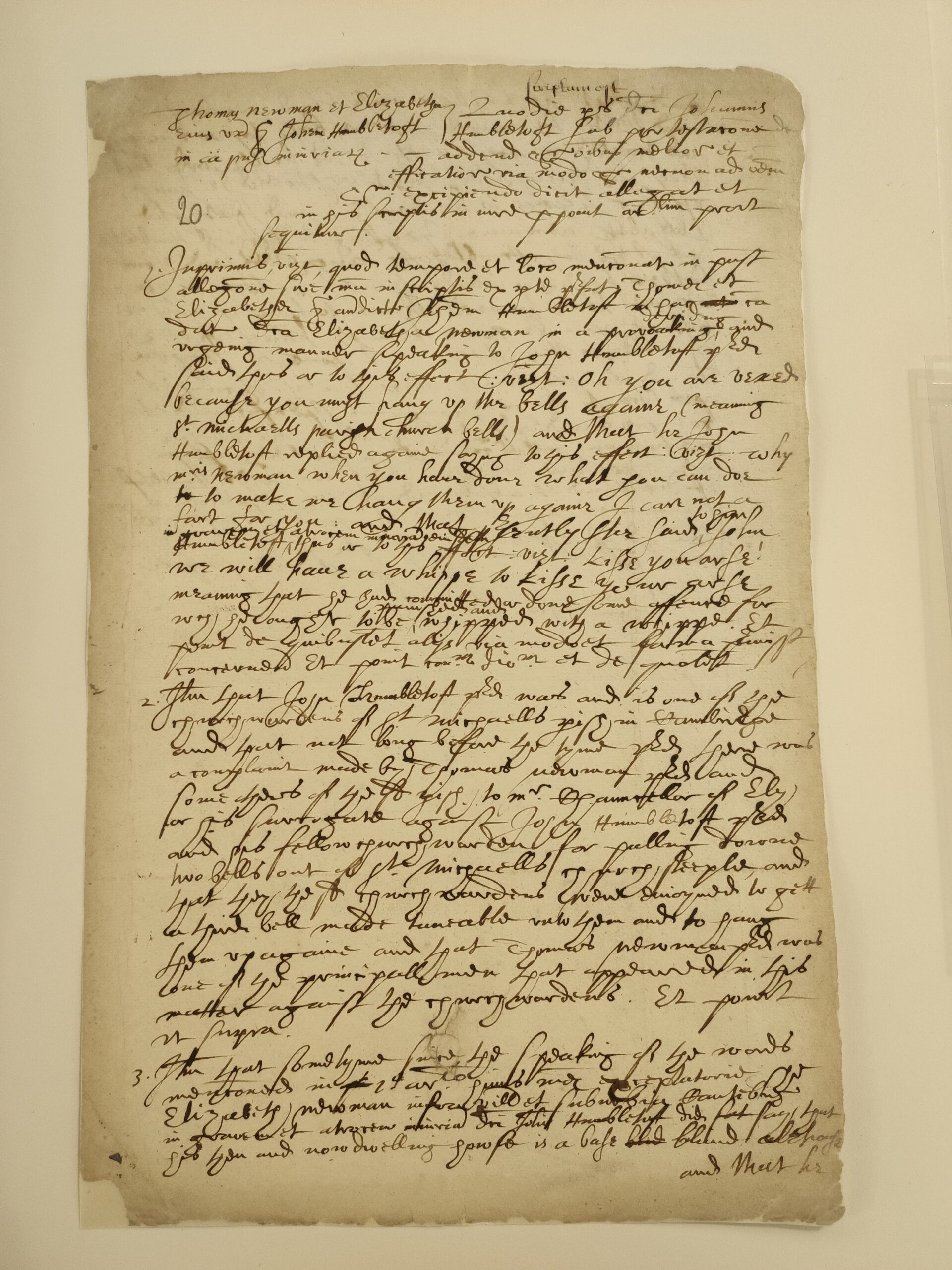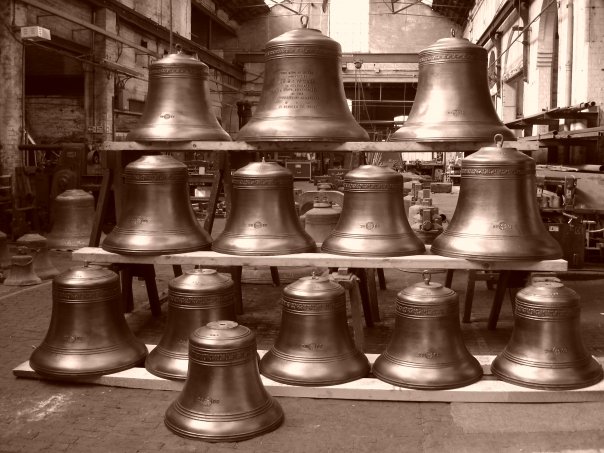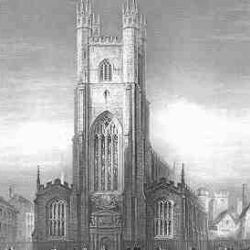
If you have visited Cambridge recently you will know that St Michael’s church, or Michaelhouse, is now a thriving cafe and meeting space in Trinity Street, under the management of Great St Mary’s. It still has a tower, though at present that is mainly used for storage.
The four bells that originally hung there were removed in the 1960s. It was planned that they would find a new home in St Augustine’s church at Cashmere Hills near Christchurch, New Zealand. In the event, after a theft from the bell founder’s yard, only one finally found its way around the globe.
Three of the bells had been cast in 1683 by Christopher Gray but the tenor was deemed unsatisfactory so Charles Newman added the fourth a year later. Tantalisingly, Raven noted that ‘the history of this peal is to be found at great length in the parish book’. Unfortunately, since he consulted them in the nineteenth century, those churchwardens’ accounts have gone missing. We are left with those details that he reproduced.
Other surviving documents provide insight into the history of earlier bells at the church. They also give an amusing glimpse into how a dispute about bells could re-emerge in an intemperate feud between neighbours.

In 1625 the churchwardens at St Michael’s were summoned to the Consistory Court of the Bishop of Ely which at that time sat in Great St Mary’s. John Humbletoft and William Howe duly appeared on Monday 18th July. One of the church’s three bells was broken and they were accused of removing the other two and arranging the casting of an entirely new ring of three. Unfortunately they had done so without either the agreement of the parish or obtaining a faculty. The court found that what they proposed to do ‘… is thought to be most dangerous for spoiling of all the bells’.
St Michael’s had a history of removing its bells. When Great St Mary’s was looking to augment from four bells to five in 1611 the parish had great difficulty in finding additional bell metal. Eventually it negotiated to take one of the bells from St Michael’s. Although the Great St Mary’s records say that the bell was ‘borrowd of them’, it was clearly a purchase. There then appears to have been some dispute about the transaction. The eventual cost to Great St Mary’s, including weighing the bell, legal fees and so on, was just over £16 (about £3,300 today).
Facing the court in 1625 Humbletoft and Howe admitted their error and were ordered ‘…to cause and procure the said bells to be hanged up again and a lesser third bell to be cast or gotten, tunable to the other two…’. All the costs, including those already incurred, were to be submitted to the court for approval. The churchwardens already had some £10 in hand and the rest, another £20 or so, was to be covered by raising a parish rate. The work appears to have been carried out by Tobie Norris of St Ives.

Thus the matter seemed to have been settled to everyone’s satisfaction and the churchwardens had appeared contrite whilst before the court. However, for at least one of them resentment simmered. It boiled over in a dispute between the Humbletofts and their neighbours, the Newmans. A cause for using injurious words was brought before the court of the University Vice-Chancellor. The Newmans’ complaint was sparked by John Humbletoft’s response to their objection to his removal of the two bells. It was alleged that when Elizabeth Newman said ‘you are vexed because you must hang up the bells again’, John Humbletoft replied, ‘I care not a fart for you…kisse your arse, we will have a whippe to kiss your arse’.
Various witnesses were brought into court before judgement was made against Humbletoft in the sum of £5. In parallel Thomas Newman brought a case against Rachel Humbletoft, John’s daughter, also for injurious words. The evidence there touched on the respectability of the Humbletoft’s alehouse and Rachel’s behaviour with scholars visiting the establishment. Judgement again went in the Newmans favour and the value of the injury to them was, rather remarkably, assessed at £100.
Humbletoft was certainly no stranger to appearing in the university courts. He was brought before them on several occasions both before and after 1625, either for selling beer at incorrect prices or in short measure, or for ‘flesh dressing’ (ie preparing meat during the closed periods before Lent and Christmas). Nor was he alone in facing accusations of injurious language. The university courts at the time were full of such cases. They were clearly no bar to becoming a churchwarden.
Main sources:
Raven, Church Bells of Cambridgeshire
Palmer, W. M. (1935). The Faculty Books of the Diocese of Ely, 1724-1875.. Proceedings of the Cambridge Antiquarian Society 35. Vol 35, pp. 54-85
Cambridge University Act Books, 13 Nov. 1612-1 Nov. 1617, 7 Nov. 1617-8 Jan. 1622, 11 Nov. 1625-28 Jan. 1631
Cambridge University Vice-Chancellor’s Court, Exhibita files, 1540-1700
St Mary the Great, Churchwardens’ Accounts, Vol I, 1504-1635
Gareth Davies



Leave a Reply